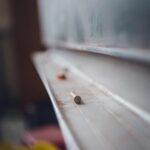Let me share a secret with you. For all the fancy whiteboards that light up like flying saucers and all the digital presentations that whizz across screens — sometimes, I just want the chalk. I have been a teacher for more than twenty years now, mostly guiding the littlest ones — the K to 3 crowd — through the great mysteries of the alphabet and basic addition. I have witnessed the rise and fall of technology, believe me. I have had to deal with the erratic projector that stops working five minutes before the bell — usually when I’m trying to show a video of the caterpillar turning into a butterfly. I have also struggled with the infamous software update that erased half of my painstakingly prepared lesson.
After one too many tech meltdowns, I took a sabbatical from the smartboard and went “back to the blackboard.” It wasn’t just a physical change — it was a shift back to the very rhythm of my teaching soul.
Particularly with young children, a screen cannot convey the intimacy of the blackboard. It’s the tiny squeak, scratch, and tap of chalk on slate. It has a dry, earthy scent that feels exactly like learning itself — like old books and concentrated effort. It’s the smell of my own childhood classroom, really.
With a projector, the information is there — instantaneous, clean, and often overwhelming for small eyes. But with the blackboard, we are on a journey together. As I write, I slow down. I think aloud. I give them the gift of time. I watch their little heads bob. They aren’t just passively absorbing a slide — they’re copying a formula or tracing a new letter. And in that quiet moment, as they lean in to track my slightly crooked chalk line, they are processing, not just transcribing.
I can look over my shoulder and see one of my seven-year-olds struggling with the tail of an ‘s’. I can pause, step back, and ask. The chalk dust becomes a mirror reflecting the pace of the room. If my little ones are scribbling frantically, I know I’m going too fast.
Ah, the mistakes. The blackboard is the great, forgiving canvas of error.
I still remember a student named Roshan who was in my Grade 2 class ten years back. Bless his cotton socks — he was a walking disaster of a note-taker. One day, I was writing a particularly long, complex sentence. I got halfway through and realized I had used the wrong tense. Without a blink, I lifted the eraser — that satisfying, fluffy wooden block — and swiped it clean. It was an instantaneous correction.
Roshan looked at me, utterly delighted, and whispered to his friend, “Wow. The mistake just vanished.”
That’s the beauty of it — you model the lesson, but you also model the correction. You show them that an error is not a permanent, ugly digital mark; it’s just a bit of dust you brush away. It’s natural — the easy part of the process. I even started making a tiny math mistake now and then on purpose, just to see them leap up and shout, “Teacher, you forgot to carry the one!”
That feeling of a dozen small, triumphant voices in the classroom — fuelled by a child spotting my deliberate blunder — is unmatched. It makes them feel like the smartest people in the room.
Going back to chalk and slate has stripped the lesson back to its bare essentials. It’s just me, the students, and the subject. We don’t have the glow of the screen distracting us; we have the tactile reality of the room. It gives me space to move — to literally act out a historical event using the board. It teaches them that the best tool is often the simplest one.
The tech is powerful, and I use it when I must — but give me the feel of that chalk in my hand, the satisfying cloud of dust on the eraser, and the engaged eyes of my students following each scratch and line.
After twenty years of teaching, I know that sometimes, to truly teach, we all need to take that simple, deep breath and go back to the blackboard.
Image Courtesy: https://www.pexels.com/@introspectivedsgn/
If you loved this nostalgic walk down the chalk-dusted lane, leave your thoughts in the comments below!
— Bhawana Sethi

About the Writer
Meet Bhawana Sethi – an educator, poet, and storyteller whose creative spirit shines through everything she does. Based in Bangalore, where she now teaches phonics after more than two decades in Delhi classrooms, Bhawana brings both experience and heart into her work.
Her debut poetry collection, Tapestry of Soulful Stanzas, beautifully explores themes of devotion and love, offering readers a glimpse into her lyrical world. She is also venturing into fiction with her upcoming romantic comedy, The Grammar of Love, a delightful tale that contrasts a methodical literature teacher with a free-spirited art teacher. Alongside this, she is crafting a children’s fiction book, curating thoughtful blogs, and engaging actively in writing community challenges.
Beyond the written word, Bhawana finds joy in the kitchen, where cooking becomes another form of her artistry. You can follow her creative journey on Instagram at @soulful_articulation.



